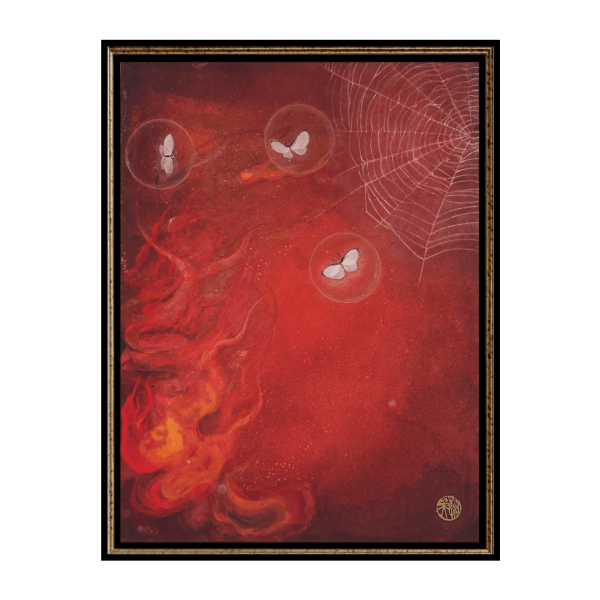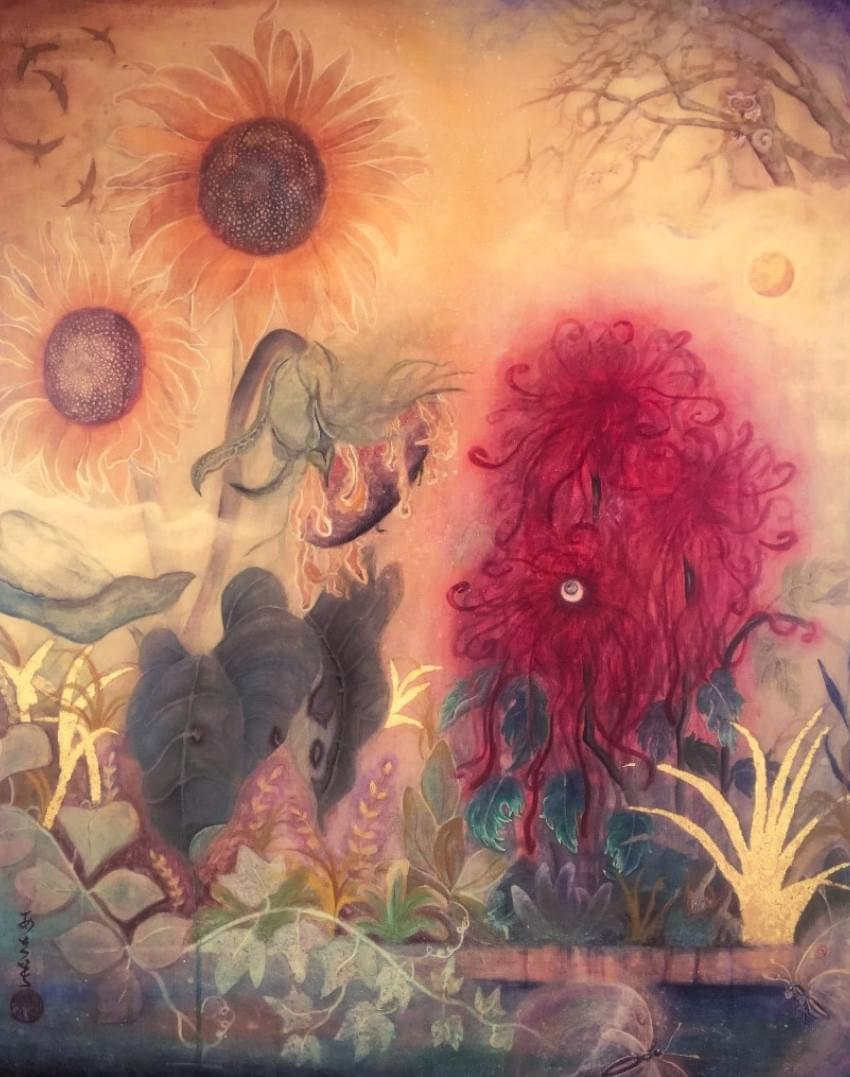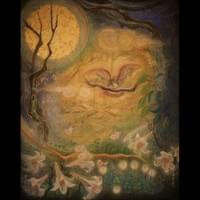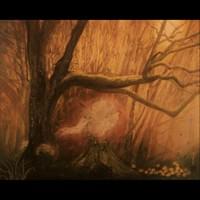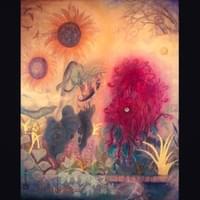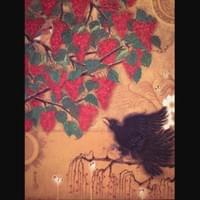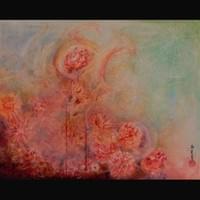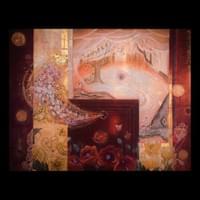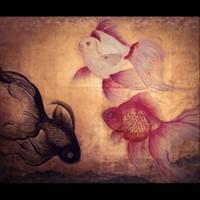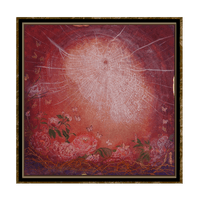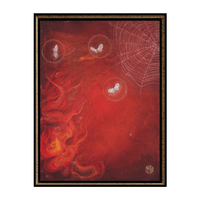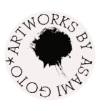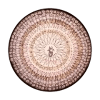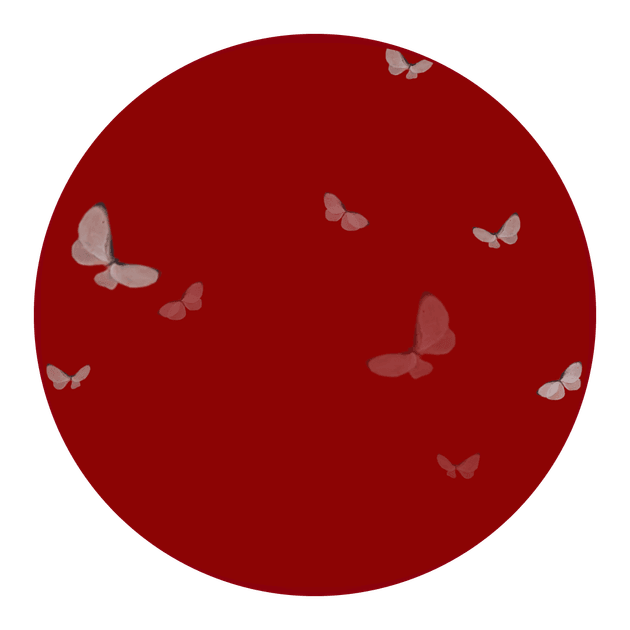



The Web Gallery of NIHONGA
Asami GOTO|日本画 五島アサミ
- …



The Web Gallery of NIHONGA
Asami GOTO|日本画 五島アサミ
- …

五島アサミ|日本画 公式アーカイブ
Asami Goto | Nihonga — Official Archive
About this Archive
日本画の作品・素材ノート・制作記録を収めたアーカイブ。
新作と展示記録を継続更新。
Archive of Nihonga works, material notes,
and process records. Updated regularly.
作家について / About the Artist
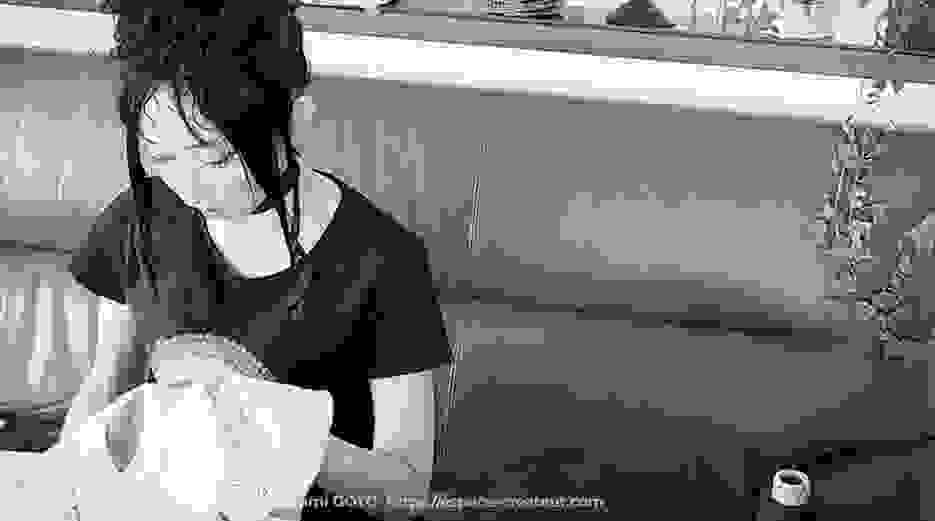
五島アサミ/ Asami GOTO
|現代美術家(幾何学刺繡+墨アート × 日本画)
東京を拠点に活動。
| Contemporary Artist
(Geometric embroidery + sumi ink × Nihonga)
Based in Tokyo.
JIAS日本国際美術家協会会員
JAPAN INTERNATIONAL ARTISTS SOCIETY Member
五島アサミは、これまでにフランス、アメリカ、スペインなど、国内外で作品を発表し、展示や販売を重ねてきました。作品は、医療関係機関や企業、音楽業界をはじめ、女優ジェーン・バーキン、菅野美穂、KEIKO(globe)など、多方面で活躍する人々にも選ばれています。フランスとアメリカで約8年間を過ごし、多様な文化や芸術に触れる中で、独自の表現スタイルを育んできました。
目に見えない領域に目を向け、物事の本質を明らかにし、それを芸術へと昇華させることをテーマとしています。
宇宙、自然、動物、植物、昆虫といったモチーフを象徴的に描き出し、作品世界を広げています。
Asami Goto has presented her works both in Japan and internationally, including in France, the United States, and Spain. Her pieces have been exhibited and sold through numerous exhibitions and collections. They have been selected by medical institutions, corporations, and the music industry, as well as by prominent figures such as Jane Birkin, Miho Kanno, and KEIKO (globe).Having spent about eight years in France and the United States, she developed her unique artistic style through exposure to diverse cultures and art scenes. Her work focuses on the invisible realms, seeking to reveal the essence of things and elevate them into artistic expressions. She symbolically depicts motifs such as the cosmos, nature, animals, plants, and insects, expanding the poetic universe of her work.
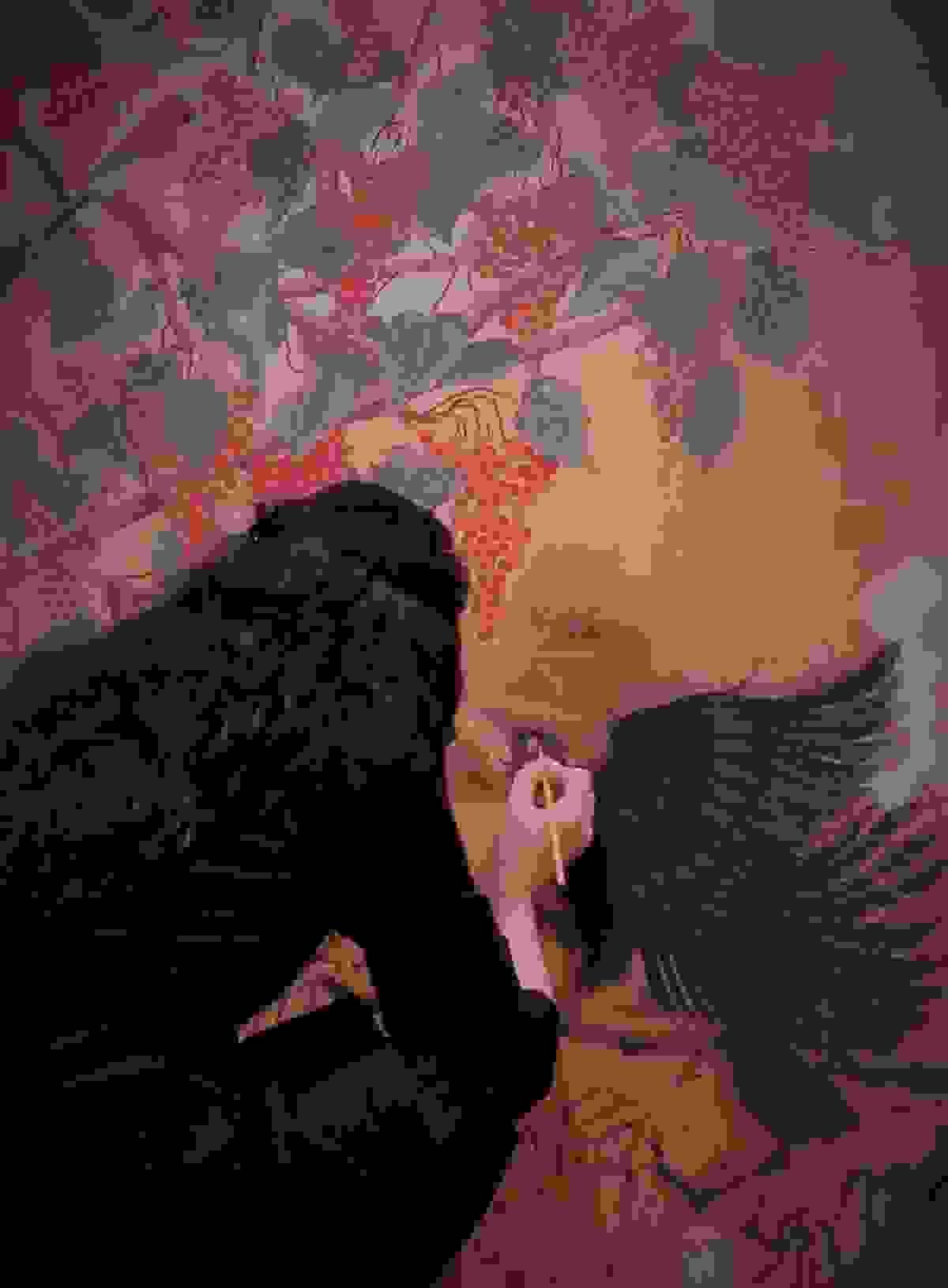
東京生まれ。幼少期を札幌で過ごす。のちに東京、フランス、再び東京、アメリカへと拠点を移し、現在は東京在住。
I was born in Tokyo and raised in Sapporo. After living in Tokyo, France, Tokyo again, and the United States, I am currently based in Tokyo.

制作の想いと理念
Artist statement — Philosophy
五島アサミは、仏教美術の精神性に触発され、形を超えた見えない気配や微細な存在感をとらえることを探求している。雲肌麻紙に岩絵の具、胡粉、墨、金銀箔を用い、静かな思索を誘う光と影の繊細な移ろいを表現している。
「見えないものへ視線を向ける」というテーマに導かれ、物事の本質を明らかにし、それを芸術へと昇華させることを志している。宇宙、自然、動物、植物、昆虫といったモチーフを、象徴的かつ詩的な手法で描き出す。
制作の核となるのは、天然石を微細に粉砕した鉱物顔料の使用である。蝋燭の灯りや反射光にかすかに煌めくその質感は、画面に妖艶で繊細な光彩を宿す。重ね塗りによって生まれる色彩は、生命のリズムと時の痕跡を体現し、各作品に静寂と生命力を同時にもたらしている。
日本の伝統的な絵画材料に深く根ざしつつ、現代的な感性を織り交ぜて制作を続けている。
Asami Goto’s work is deeply inspired by the spirituality of Buddhist art. She explores ways to capture intangible presences and subtle sensations that exist beyond form. Using traditional materials such as washi (un-bleached hemp paper), mineral pigments, gofun (crushed seashell white), sumi ink, and gold and silver leaf, she expresses delicate transitions of light and shadow that invite quiet contemplation.
Guided by the theme of “turning one’s gaze toward the invisible,” she seeks to reveal the essence of things and elevate them into artistic expression. Symbolic and poetic representations of the cosmos, nature, animals, plants, and insects serve as recurring motifs in her work.
At the core of her practice is the use of finely ground mineral pigments derived from natural stones. Their faint, iridescent shimmer under candlelight or reflected light imbues the surface with a mysterious and delicate radiance. Layer upon layer of color embodies the rhythms of life and traces of time, bringing both silence and vitality to each piece.
Deeply rooted in traditional Japanese painting materials, Goto continues to create works that weave contemporary sensibilities into classical techniques.
Title:【夜の太陽が統べる森で、魚の夢を見た。】
【In the Night Forest, I Dreamed of Fish That Ruled creation proces】

Title:妖花と朝蜘蛛Ⅲ
Bewitching Flower and Morning Spider Ⅲ
Size: S30 (910×910mm)
Medium: 岩絵の具・墨・胡粉・顔彩・金・銀箔・金・銀泥、/雲肌麻紙 貼付 木製パネル
Traditional Japanese mineral pigments (iwa-enogu), gofun (white shell pigment), sumi ink,
gold and silver leaf, Kumohada-mashi (traditional Japanese hemp paper), mounted on wood panel
本作では「朝蜘蛛」を直接描くのではなく、その存在を気配として表そうとしました。夜明け前の静かな空気を背景に、光を帯びる蜘蛛の巣を画面中央に広げ、宇宙的な秩序と生命の網を象徴させています。下部には豪華に咲く牡丹を配し、舞う蝶には儚さを託し、生命の官能と脆さを映し出しました。蜘蛛の姿そのものは描かずとも、「巣」と「時刻」と「気配」によって、その存在を強く感じ取っていただけると思います。古来より吉兆とされる朝蜘蛛を、私はここで新しい始まりや希望の兆しとして表現し、作品全体を象徴主義的な抽象表現へと導きました。
In this work, I chose not to depict the “morning spider” directly, but to convey its presence through atmosphere.
Against the still air before dawn, I expanded a luminous web at the center of the composition, symbolizing cosmic order and the interwoven threads of life.
Below, lavish peonies bloom while butterflies flutter, embodying both sensuality and fragility.
Even without showing the spider itself, I sought to let its presence be felt through the web, the hour, and the aura of the scene.
Traditionally considered a harbinger of good fortune, the morning spider here becomes, in my eyes, a sign of new beginnings and hope — a vision translated into a symbolist abstraction.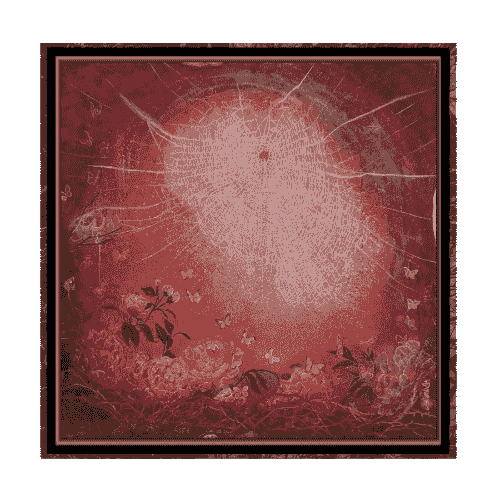
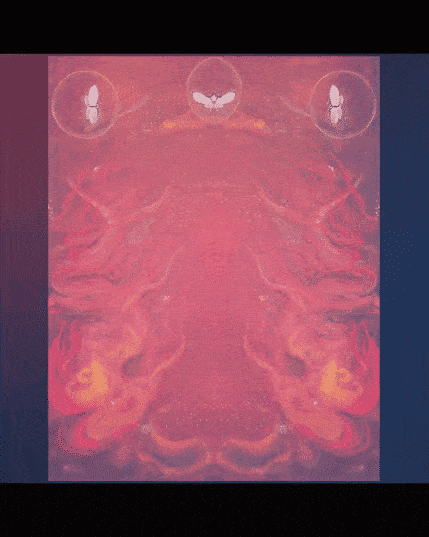
日本画素材 Nihonga Materials
日本語
English
Studio
Art brings us closer to the ultimate truth
芸術は我々を より真実へと近づける

【夜の太陽が統べる森で、魚の夢を見た。
I dreamed of fish in the forest where the night sun ruled.】

【妖花と朝蜘蛛Ⅲ
Bewitchingly flowers and Morning spider Ⅲ】

【妖花と朝蜘蛛Ⅲ
Bewitchingly flowers and Morning spider Ⅲ】
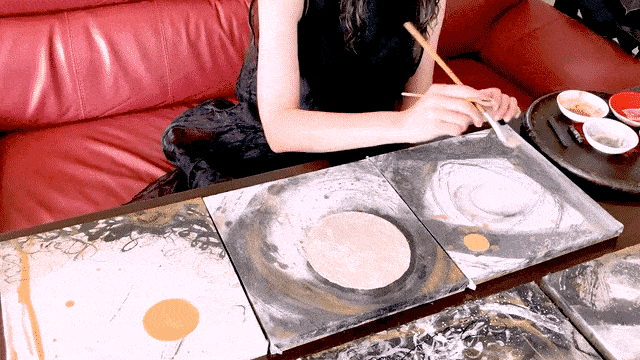
【月華譜(ゲッカフ)
Gekkafu (Moon Flower Score) Series】
Creation Proces
「夜の太陽が統べる森で、魚の夢を見た」
深い夜の森で、私は夢を見た。そこを支配するのは獣ではなく、水なき森を泳ぐ魚たちだった。
魚は、時間や境界を超えて漂う存在。無意識の象徴であり、叡智のメタファーでもある。森=現実、水=無意識。夢の中で、魚が森を統べることで、意識と無意識が交差する感覚が広がる。夜の森は、秩序の覆われた場所。魚たちは、変化し続ける宇宙のリズムを体現しながら、見えぬ法則に従って静かに世界を編んでいく。この作品は、「世界を動かすものは何か」という問いを、夢というかたちで私たちの意識に差し出す。"I Dreamed of a Forest Ruled by Fish"
In the depths of the night forest, I had a dream—not of beasts ruling the land, but of fish drifting through a forest without water.
The fish, unbound by time or borders, embody the flow of the unconscious and ancient wisdom. In this dream, the forest stands for reality, the water for the unconscious—and the fish, reigning within, blur the boundary between the two.The night forest is a place where visible order dissolves. The fish swim through its silence like threads through stars, manifesting unseen laws and the ever-shifting rhythm of the cosmos.This work poses a quiet question: What truly governs the world?
Not always what we see in daylight, but the invisible currents, hidden patterns, and silent voices that move beneath the surface of things.Exhibitions & Awards
展覧会・受賞歴
日本語
English
日本語(主な受賞歴)
English (Selected Awards)
【妖花と朝蜘蛛】
【Enchanted Blossoms and the Morning Spider】

≪美術の窓(月刊誌)掲載作品≫
≪Featured in Bijutsu no Mado (Monthly Art Magazine)≫
Size: F30/ 910×727mm
Medium: 岩絵の具・墨・胡粉・顔彩・金・銀箔・金・銀泥、/雲肌麻紙 貼付 木製パネル
Traditional Japanese mineral pigments (iwa-enogu), gofun (white shell pigment), sumi ink,
gold and silver leaf, Kumohada-mashi (traditional Japanese hemp paper), mounted on wood panel
この作品は、自然の繊細さと生命の衝動をかたちにしたもの。
燃え立つように咲く花は、生と死、創造と破壊の狭間に揺れる存在を象徴し、その色彩には温もりと炎の気配が宿る。朝の光の中で蜘蛛の姿は消え、残されたのは糸だけ。
それは存在と不在のあわいに広がる静かな余白であり、目に見えないものこそが世界を支えているという気づきを、そっと投げかけている。This work embodies both the delicacy of nature and the impulses of life.
The flaming blossoms symbolize existence suspended between life and death, creation and destruction, their colors imbued with warmth and the presence of fire.In the morning light, the spider itself vanishes, leaving only its web behind.
It becomes a quiet space between presence and absence, gently reminding us that what is unseen is often what sustains the world.
【太陽の東、月の西。】
【East of the Sun,West of the Moon】
サロン・ドートンヌ入選作品
Selected for exhibition at Salon d’Automne
Size: F40/ 1000×803mm
Medium: 岩絵の具・墨・胡粉・顔彩・金・銀箔・金・銀泥、/雲肌麻紙 貼付 木製パネル
Traditional Japanese mineral pigments (iwa-enogu), gofun (white shell pigment), sumi ink, gold and silver leaf, Kumohada-mashi (traditional Japanese hemp paper), mounted on wood panel
近年メディア掲載ハイライト
Highlights from Recent Media Features
日本語
English

【朝月夜Ⅷ~見えないものをみる
“Moonlit Dawn Ⅷ — Seeing the Unseen”
≪美術の窓(月刊誌)掲載作品≫
≪ Featured in Bijutsu no Mado (Monthly Art Magazine)≫
Size: F30/ 910×727mm
Medium: 岩絵の具・墨・胡粉・顔彩・金・銀箔・金・銀泥、/雲肌麻紙 貼付 木製パネル
Traditional Japanese mineral pigments (iwa-enogu), gofun (white shell pigment), sumi ink,
gold and silver leaf, Kumohada-mashi (traditional Japanese hemp paper), mounted on wood panel
《朝月夜Ⅷ ―― 見えないものをみる》 は、白く輝く孔雀を描いた詩的な日本画です。羽は花弁や光の粒、流れる線へとほどけ、可視の世界から不可視の世界へと静かに広がっていきます。
画面の中では、「存在」と「不在」が繊細な均衡のうちに共存しています。孔雀の身体は確かな形を保ちながら、その尾羽は大気に溶け込み、知覚を超えた見えないエネルギーの象徴として立ち現れます。
背景に散りばめられた金箔は、森の闇に潜む記憶の断片を思わせ、神秘と深みを作品に添えています。
この作品において私は、知覚を超えた世界を見つめる視座を探っています。美と真実は、可視の領域に限られるものではなく、沈黙や影、そして想像力の奥底からも静かに立ち現れるのです。
“Moonlit Dawn Ⅷ — Seeing the Unseen” is a poetic Japanese painting depicting a radiant white peacock. Its feathers unravel into petals, particles of light, and flowing lines, gently expanding from the visible world into the unseen.Within the composition, presence and absence coexist in delicate balance. The peacock’s body retains its form, while its tail dissolves into the atmosphere, emerging as a symbol of unseen energies beyond perception.
Gold leaf scattered across the background suggests fragments of memory hidden in the forest’s darkness, adding a sense of mystery and depth.
In this work, I explore a vision that extends beyond perception. Beauty and truth are found not only in what is visible, but also in silence, in shadow, and in the depths of imagination.掲載画像の無断転載・二次利用を禁じます。報道・レビュー目的での引用は事前にご連絡ください。
クレジット表記:“Artwork: Asami Goto”Unauthorized reproduction or secondary use is prohibited. For quotations in news coverage or reviews,
please contact us in advance.Credit line:
“Artwork: Asami Goto”
Explore the Official Website and Geometric Art Gallery
公式サイトと幾何学アートの世界へ
© Asami Goto / SPACE & CREATOR Studio, Tokyo






